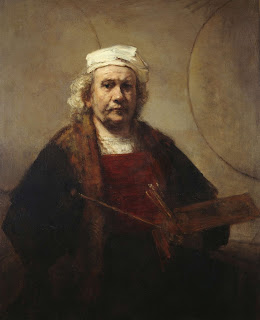The BP Portrait Award at the National Portrait Gallery is an annual highlight of the art calendar and remains one of the most distinguished international portrait painting competitions, showcasing the striking and diverse nature of contemporary portrait painting. Here is a selection of the works that caught our eye:
The power of portraiture as a visual genre is due in large part to its complex issues of self, identity and technique, particularly related to the idea of space and how one occupies it both physically and psychologically. This year's exhibition includes family members, figurative nudes, expressive sketches and famous faces including Bob Geldof and highlights the genre's diversity in terms of purpose and style.
First prize was awarded to Matan Ben- Cnaan, an Israeli artist who depicts his friend Guy and step-daughter Annabelle. The work is partly inspired by the biblical story of Israelite judge Jephthah, who promised God that in return for victory over the Ammonites he would sacrifice the first thing that greets him upon his return. To Jephthah's dismay it is his daughter, who is later sacrificed. This allegorical, neo-realist painting is imbued with an uneasy atmosphere, which is reflected in the composition and reinforced through the extreme use of light and shadow. The grittiness of the wall and gravel parallels Guy's (Jephthat's) character, whilst the fig free foretells Annabelle's tragic fate.
 |
| 'Annabelle and Guy', Matan Ben- Cnann © Matan Ben - Cnaan |
Michael Gaskell's portrait of his niece Eliza was awarded second prize. Gaskell hopes the portrait 'conveys a sense of Eliza's growing confidence as she develops into a woman...but retains some of the self-consciousness which was also present at the time (that she first sat for her uncle as a small child.)' A year before this work began, Gaskell was commissioned to paint an American collector who was particularly interested in the Early Netherlandish artist Hans Memling, which Gaskell believes influenced the lighting and composition of this painting. The influence of Dutch art is paralleled by a more contemporary, timeless character.
 |
| 'Eliza', Michael Gaskell © Michael Gaskell |
The influence of past art is also evident in 'Charlotte and Emily' by Leslie Watts. Painted in egg tempera, its format was inspired by the portrait of King Henry VII that is part of the permanent collection. The two sitters, who are Watts's daughter and her partner, sat inside a picture frame during sittings so that Watts could see the effects of light and how they interacted with the space. 'Portrait of Christian in Profile' by Marco Ventura shows the influence of Renaissance profile portraits and 'Rocio, Nude on Carpet' by Eduardo Millan depicts a contemporary female nude but also references Greek and Roman classical sculpture.
 |
| 'Portrait of Christian in Profile', Marco Ventura © Marco Ventura |
'My mother and brother on a Sunday Evening,' by Spanish artist Borja Buces Renard was awarded third prize, admired for its loose, unfinished quality and the close relationship that Renard has captured between the sitters. The painting depicts a snapshot of of artist's family, who would meet at the end of the week, catch up and talk about art. Buces writes that 'I believe an artist should paint the world that surrounds them, that they know really well, to create meaningful art.'
 |
| 'My mother and my brother on a Sunday Evening', Borja Buces Renard © Borja Buces Renard |
 |
| 'Sink or Swim', Ian Cumberland © Ian Cumberland |
'Sink or Swim' by Ian Cumberland is a powerful self-portrait that visually documents the artist's 'wake up call to try and change the things you have control of.' 'J' by New York based artist Eleana Antonaki won the BP Young Artist Award. The painting depicts the Antonaki's friend and fellow artist Julie Laenkhom, who makes work that focuses on the idea of the 'object as a living thing.' Julie is captured sitting alone in a somber space, meditating at a table and surrounded by objects, which reflects her strong preoccupation with items such as balls of clay. Antonaki's engagement with the isolation of contemporary life is accompanied by her exchange with portraiture as a historical tradition, 'In my portrait, I am referring to the archetypal image of a sitting figure and at the same time to construct an image that exists in a dialogue with the traditional painting space.'
 |
'J', Eleana Antonaki © Eleana Antonaki
|
 |
'Charlotte and Emily', Leslie Watts, © Leslie Watts
|
 |
| 'Rocio, Nude on Carpet', Eduardo Millan © Eduardo Millan |
|
The BP Portrait Award runs until
20th September 2015 at The National Portrait Gallery, St Martin’s
Lane, London, WC2H 0HE.
|


















